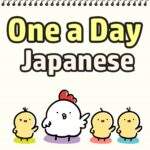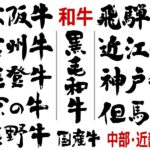Contents
Wagyū Grading System by the Japan Meat Grading Association
When you purchase or order Japanese Wagyū, you might notice the term "A5".
This is the highest grade given by the Wagyū grading system.
Beef is graded based on the yield and meat quality.
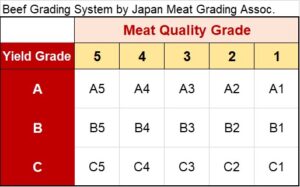
For yield: A-C and A is the best / For quality: 5-1 and 5 is the best.
Why "Yield" is so important? Grade A-C of the Beef Grading System
A bit more in detail...
Yield is the ratio of final weight of meat to the total weight of carcass.
For example, when the weight of carcass is 1,000lb, and the weight of final meat product is 600lb, the ratio is 600/1000 (600 divided by 1,000 = 0.6 which is 60%).
Beef that we consume are various parts of muscle; shank, top-round, fillet, plate, sirloin, short rib, brisket, shank, chuck roll, etc.
Wagyū growers try their best to achieve the best quality meat which has a perfect combination of fat and muscle (marbling). So, total weight of cattle alone does not determine the quality of final meats. The bigger is not necessarily the better.
Another example:
- Cattle A weighs 1000 lb → final product weighs 570 lb → yield is 57%
- Cattle B weighs 1500 lb → final product weighs 825 lb → yield is 55%
Better % yield (cattle A) gets a better grade because the cattle A was in better shape so to speak.
Cattle A did not put on excess fat under its skin or around muscle (which is a waste), it was lean enough with good amount of quality fat.
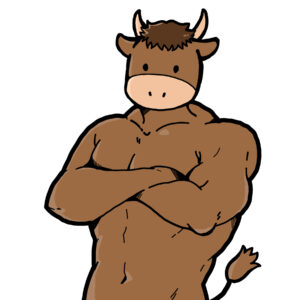

Meat Quality Grade: 5 to 1 of the Beef Grading System
The highest grade possible for Japanese Beef is "A5". Of this, grade "A" is for the highest yield %. and grade "5" is for the best meat quality. Meat quality 5 - 1 are based on the following 4 categories:
- Beef marbling ("Simohuri" fat & red meat forming)
- Color and brightness of the meat
- Firmness and texture of the meat
- Color and brightness of the fat
Each of above 4 categories are graded individually, and the lowest of the 4 grades becomes the final grade for the overall meat quality (5-1). This means all 4 categories must score 5 to get the final grade of 5.
Combining the Yield% and Meat quality, there are 15 possible grades. The Japanese Wagyū sold in the market outside of Japan is usually A5 or A4.
NOTE
One important fact to remember is that the Wagyū grading system emphasizes amount and look of fat. If you prefer less fatty, meatier texture and flavor, then A4 grade beef might be more to your liking than A5.
In other words, if the meat has grade 5, that means it's superb in all categories including high fat/marbling content.
And if the meat has grade of 3, for example, that might be that it scored 3 on marbling (less fat), but scored 5 in all other categories. This is because the grading system takes the lowest grade out of the 4 categories regardless of how high the rest of categories score.
Proof of authenticity - the universal Wagyū mark
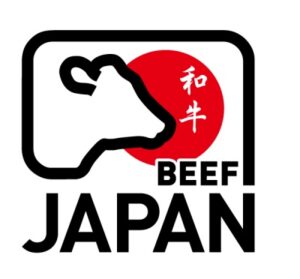
This is a copy of one of the Universal Wagyū Marks issued by Japan Livestock Industry Association in 2007 to promote authentic Japanese Wagyū to the people around the world. When you see this logo, you're assured that the Wagyū beef you have is the finest quality and flavor of an authentic Wagyū beef from Japan.
Four Breeds of Wagyū - their characteristics
Japanese Wagyū must be one of the 4 breeds (or mix of them) listed here.
- Kuroge-wasyu (Black Cattle)
- Akage-wasyu (Japanese Brown Cattle)
- Nihon-Tankaku-syu (Short horn Cattle)
- Mukaku-wasyu (Polled Cattle)

1. Kuroge Wasyu - 黒毛和牛 (Black Cattle)
Primary place of origin: Nationwide
This breed makes up more than 90% of Japanese Wagyū, and they are raised nation wide. This is the Japanese Wagyū that most people are familiar with.
Because each region has unique method of growing and caring for cattle which results in distinct characteristics in flavor and looks, those Wagyū are known with the name of the region that they are from. Kōbe beef (Hyōgo pref.), Matsuzaka beef (Mie pref.), and Ōmi beef (Shiga pref.) are some of the famous brands
Kuroge Wasyu is notorious for its marbling (rich fat contents) and juicy flavor. Melting point of the fat is rather low, that's why it feels like it melts in your mouth. Also Kuroge-Wasyu has distinct sweet aroma when cooked.
2. Akage Wasyu・褐毛和種・Japanese Brown Cattle
Primary place of origin: Kumamoto pref., Kōchi pref., Hokkaido
Akege Wasyu usually contains less marbling (less fat contents). They are often grazed freely and that creates delicate balance of fat and meat. Akage Wasyu is popular for those who prefer less fatty and more meaty texture and flavor.

3. Nihon Tankaku-syu・日本短角種・Short Horn Cattle
Primary place of origin: Northern regions such as Aomori pref., Iwate pref. Akita pref., and Yamagata pref.
This is a rare breed raised in northern regions. There are only about 8,000 of them in Japan (0.0005% of total cattle).
Flavor and texture are similar to Akage Wasyu. Healthier balance of fine fat marbled with red meat creates unique red meat "umami" with meatier texture.
4. Mukaku Wasyu・無角和種・Japanese Polled Cattle
Primary place of origin: Yamaguchi pref.
”Mukaku" means "no horn". This is even more rare breed than Nihon Tankaku-syu above, there are only about 200 or so cattle in Yamaguchi pref.
The meat is mostly red meat and not much fat, so it gives more meatier texture and flavor. Natutal "umami" comes out as you chew on it.
How to enjoy authentic Japanese Wagyū at your own home
You have a general idea of what Japanese Wagyū is. Now where can you get them and how to enjoy them at home?
There are many traders, importers, and some local markets that offer Wagyū beef. But I strongly recommend you try authentic Japanese Wagyū Beef first. Because that will be your starting point for the exciting beef connoisseur adventure.
Authentic Wagyū Online Purchase
HOLY GRAIL STEAK CO. based in San Fransicso, CA is one of the best beef distributors in US with great Japanese Wagyū selections.
Like fine wines, the flavors and legendary intramuscular fat structures of Japanese Wagyu vary noticeably, not just from region-to-region (known as Prefectures), but from farm-to-farm based on genetics, feeding protocols and husbandry. Holy Grail's expertly-curated portfolio of Wagyu is the most comprehensive assortment in the world, tracing the expression of Wagyu from the cold northern climes of Hokkaido to the sub-tropical beauty of Kyushu.
The great thing about HOLY GRAIL is that they have all kinds of Japanese Wagyū from all over Japan including some of the hard-to-get brand. You can try A5 as well as A4 cuts to see what your preference would be.
A5 grade Japanese Wagyū is for sure the ultimate beef experience. You've got to try it once to really appreciate and understand why it's so special.
Check out the HOLY GRAIL website for more information and purchase options.
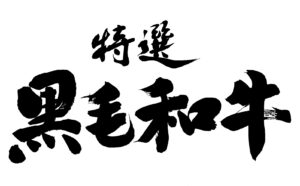
For me personally, I tried both A5 and A4 from various regions, I prepared them as ShabuShabu, Sukiyaki, Steak, and Yakiniku.
I like A5 Kuroge-wasyu for simple steak, medium rare. It's best to have smaller portion like 5-7 oz because it is rich. These are NOT for BBQ grill since too much fat dripping will cause high flame.
For 1" or so steak, cook on heated iron or steel pan with just a little oil swipe (or no oil is ok), cook at high temp for 30-40 seconds, lower heat and cook for 1 minute, turn it over, cook another 30-40 seconds at high, then lower the heat again and cook for 1 minute (or until your desired doneness is obtained.)
The key is to flip only once. Cook at high for the nice browning, then cook at lower heat to get your preferred doneness.
Sukiyaki is another great option for A5 thinly sliced Wagyū. Sukiyaki pot when cooked will hold the perfect temperature for "Umami" of the beef to come out.
I'll write more about Wagyū cooking and recipe soon. Enjoy!
References
▸Koyama Farm (https://koyamabokujo.com) - Authentic Japanese Wagyu producer in Nagasaki pref.
▸Yano Chikusan (https://www.yanochikusan.co.jp) - Authentic Japanese Wagyū producer in Kumamoto pref.
▸Japan Livestock Industry Association (jlec-pr.jp/en/)→useful data on Japanese livestock, recipes and info.
▸The Ministry for Agriculture, Forestry and Fisheries Japan (https://www.maff.go.jp/e/index.html)
See you next time! 
Please note
